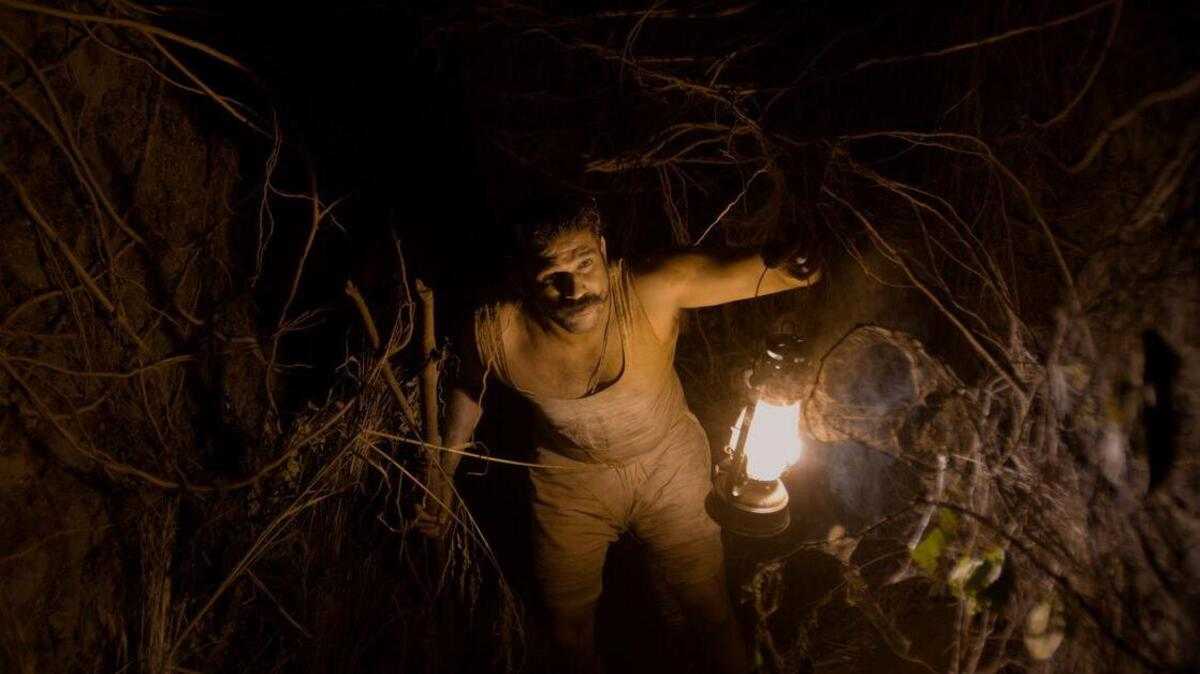Soham Shah’s “Tumbbad” is a masterpiece of Indian cinema that left audiences and critics mesmerized with its unique storytelling, stunning visuals, and a hauntingly beautiful soundtrack. Released in 2018, this dark fantasy film took Indian cinema to new heights and received international acclaim. However, what many may not be aware of is the extensive effort and meticulous planning that went into the production of “Tumbbad.” In this article, we’ll delve into the production truth and budget behind this cinematic gem.
Setting the Stage
“Tumbbad” is a period fantasy film set in the early 20th century in a fictional village in Maharashtra, India. The film revolves around the mythological story of the goddess of prosperity, Hastar, and the insatiable greed of the protagonist, Vinayak Rao, played by Sohum Shah himself. The film’s unique blend of fantasy, horror, and folklore required a detailed and realistic production design to bring the story to life.
The budget of “Tumbbad” was a topic of intrigue and discussion in the film industry, especially considering the ambitious nature of the project. While many Indian films tend to operate on tight budgets, “Tumbbad” sought to set new standards in terms of production quality and attention to detail.
The estimated budget for “Tumbbad” was approximately 40-45 crore Indian Rupees, which translates to roughly $5.5-6.2 million USD at the time of production. This was a significant investment for an Indian film, especially one that was not centered around a mainstream star cast. Sohum Shah, who also produced the film, believed in the project’s potential and was willing to invest both time and money to ensure its success.
Production Challenges in ‘Tumbbad’
The making of Soham Shah’s “Tumbbad” was a cinematic journey fraught with numerous production challenges, each of which significantly impacted the film’s budget and contributed to its ultimate success. Below, we explore these challenges in greater detail, shedding light on the intricacies involved in bringing this visually stunning masterpiece to life.
Location Scouting: The process of finding the ideal locations to recreate the film’s period setting was both labor-intensive and resource-intensive. The production team embarked on an extensive hunt throughout the state of Maharashtra to unearth the perfect backdrop for “Tumbbad.” They needed to identify locales that not only authentically represented the early 20th-century setting but also aligned with the film’s supernatural and atmospheric tone. This arduous endeavor included scouting remote, often hard-to-reach areas, leading to increased logistical complexities and expenses.
Weather Conditions: Filming in remote, rural areas introduced an additional layer of complexity: the unpredictable Indian weather. The production team faced the challenges of navigating climatic uncertainties, which frequently resulted in delays and inflated production costs. The production schedule had to be adjusted continuously to accommodate unexpected rain or other weather-related disruptions. This aspect of the shoot underscored the dedication and adaptability of the cast and crew, as they persevered through various climatic obstacles.
Special Effects and Visuals: “Tumbbad” stands out for its visually captivating elements, which included intricate creature design and awe-inspiring visual effects. These elements demanded a substantial portion of the film’s budget. The creation of Hastar, the film’s central supernatural entity, required meticulous craftsmanship and attention to detail. The visual effects team spared no expense in crafting the surreal and hauntingly beautiful world of “Tumbbad.” These investments were crucial in immersing the audience in the film’s dark and enchanting narrative.
Extensive Post-Production: The journey didn’t end with the completion of principal photography. Rather, the post-production phase of “Tumbbad” was equally demanding. Complex visual effects work was necessary to realize the film’s otherworldly atmosphere fully. Sound design played a pivotal role in creating an immersive and haunting auditory experience. These aspects of post-production added another layer of financial commitment to the project. The intricacies involved in editing, sound mixing, and visual effects required meticulous attention to detail and a significant portion of the budget.
The Return on Investment
Despite the initial concerns about the budget, “Tumbbad” ultimately proved to be a wise investment for Sohum Shah and the entire team. The film’s success both in India and internationally helped recoup its budget and more. It received critical acclaim and won several awards, including the Critics’ Choice Film Award for Best Cinematography and the National Film Award for Best Special Effects.
The film’s haunting visuals, intriguing storyline, and evocative performances left a lasting impact on viewers, cementing its status as a cult classic. Additionally, the film’s successful run on streaming platforms further boosted its revenue and popularity.
Conclusion
Sohum Shah’s “Tumbbad” is a testament to the power of vision, dedication, and belief in a project. While its budget was a significant investment, the film’s exceptional quality and unique storytelling justified every rupee spent. The production challenges were overcome through meticulous planning and execution, resulting in a visually stunning and emotionally resonant masterpiece. “Tumbbad” stands as a shining example of how Indian cinema can push boundaries and create world-class films that captivate audiences worldwide.









Wonderful web site. Lots of useful info here. I am sending it to a few pals ans also sharing in delicious. And certainly, thank you on your sweat!